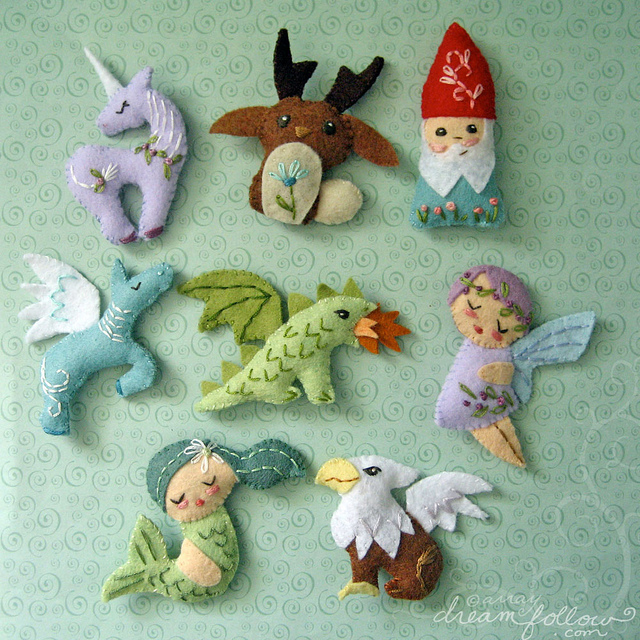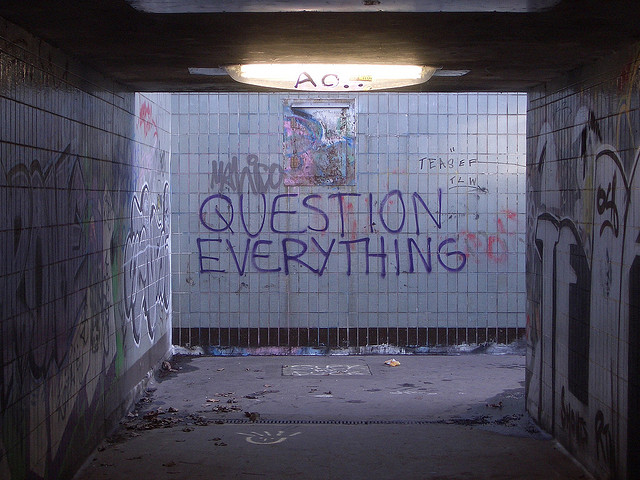Creative myths are a powerful force that gains momentum the more you repeat them. There are collective old-school myths like right-brained people are more creative or that creativity is purely an artistic expression. But what about the myths you’ve come to know very personally…because you made them up?
In many ways the creative myths you craft have served you, offering reasonable excuses that soothed the ego when you weren’t ready to move forward in a clear way, or when your fear seemed bigger than the potential just beyond it. These creative myths are harmless if you recognize them for what they are, little stories you’ve built as coping mechanisms when triggered by stress, frustration or people who push your buttons.
Creative myths turn into chains that tie down your creative spirit if you don’t invest time and attention into asking the most important question when they wiggle into your mental space: Is it true?
Myth Busting
When I was in kindergarten, I got caught and called out for “sharing” math answers with my neighbor. In 4th grade, I had a teacher who continually reinforced the idea I was bad at math and called me stupid (or some variation there of) more than once. In high school, I needed a math tutor to get through Algebra II and stop the sheer panic I would feel when I got called on in class. After tutoring, I had close to an A average.
To this day, the myth about being bad at math can still pop in and mess with me. I tune out when I think something sounds remotely like an equation or when I’m overwhelmed by math details. Yet, I can easily do basic math in my head when it comes to running my business or knowing on the fly whether something is a good deal or not.
What I’ve finally realized is that it wasn’t the panic about math itself that messed with me, but the creative myth that I’m not allowed to be wrong, which is pretty limiting when it comes to experimentation and creativity. Math is exact and writing requires finesse and flow that comes to me as I work. Math has one right answer, life has millions.
When I got older I was finally able to see how creating a myth about always having to get an answer “right” was about so much more than math, it was just easily illustrated by the concept of math. It’s one of the reasons why for many years I stuck with what I knew, writing, and didn’t venture into other creative expressions until I was much older and embraced the healing work I needed around “being right”.
If you can tune in to how some of the ideas or concepts you’ve always counted on weren’t the truth but simply leading you to a truth – you’ve started to bust a creative myth.
Ask the Question, Be Willing to Open Up to the Answer
When it comes to self-inquiry, it’s easy to fall down a rabbit hole about the process. Am I doing it right? Can I trust the answers I’m getting? Should I do more self-inquiry?
To keep things simple, stick with the short question, “Is it true?” in order to dive deeper into a creative myth or thought pattern. These three words pose a powerful question that allows you to view the bigger picture while shaking up your go-to mindset, revealing the ways it may not be supportive for you anymore.
This simple yet profound question is one Byron Katie poses in her book “Loving What Is”. Part of a short series of questions in a targeted self-inquiry process, “Is it true?” allows you to take a pause and leave some space to look at something in a deeper way. It’s a meaty question that needs to be experienced by all your senses. You may feel resistance or even start pointing fingers at someone as the source of your frustration. Or, you may not have an answer that comes to mind right away, and that is fine too. The question is something to sit with and let a response emerge through you when the time is right, but it can be applied to anything that gets you emotionally or mentally stuck.
The process of diving into the question is where you begin to poke holes in creative myths like you aren’t good at sewing, your baking stinks, your pictures are always less than stellar. The source of the myth is what keeps you feeling less than, incapable or like you need to be better at something specific in order for your creative expression to be worthy.
No matter what answers you receive when you tune in, what you really get through this inquiry is a chance to see the puppet master behind your thoughts. Is it something that happened once and you can never forget it? Or is it a series of misunderstandings that led to a creative myth that has pretty solid roots because there’s lots of proof to back it up?
Discovering the seeds behind the roots is what gives you a chance to dig out the weeds and plant something so much better that ignites your creativity instead of reminding you of all the ways you are less than or not supported.
Are you ready to start asking?
Starting simple is the best way to see where creative myths are crowding you out. If you want some help walking through the process, please connect with me for a Creative Reflection Reading. For additional reading and insight, you can also check out my posts The Real Story Behind All Those Creative Footsteps or Ask, Feel and Experiment your Way through a Creative 2015.
Photo credit: Aimee Ray, Karl-Ludwig Poggemann, Duncan Hull


